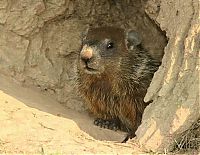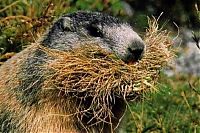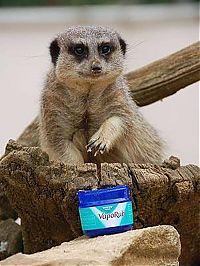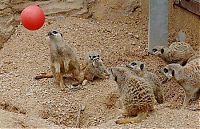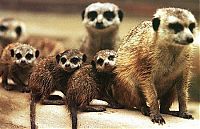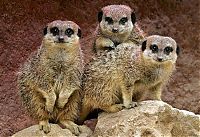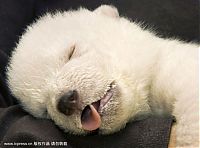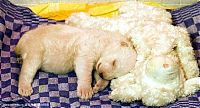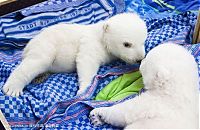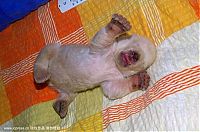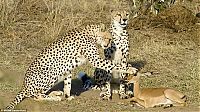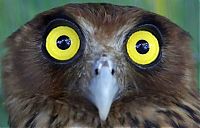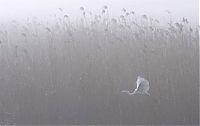Groundhog, Marmota Monax
Wednesday, 3rd February 2010, 10:28:40
Album: Fauna & Flora, New uploads: 16, Hits: 526, Size: 1MiB
...
Meerkat (suricate), Suricata Suricatta
Wednesday, 3rd February 2010, 10:27:26
Album: Fauna & Flora, New uploads: 11, Hits: 416, Size: 1MiB
The meerkat or suricate, Suricata suricatta, is a small mammal belonging to the mongoose family. Meerkats live in all parts of the Kalahari Desert in Botswana, in much of the Namib Desert in Namibia and southwestern Angola, and in South Africa. A group of meerkats is called a "mob", "gang" or "clan". A meerkat clan often contains about 20 meerkats, but some super-families have 50 or more members. In captivity, meerkats have an average life span of 12–14 years, and about half this in the wild...
Very Young Polar Bear
Monday, 1st February 2010, 09:38:38
Album: Fauna & Flora, New uploads: 8, Hits: 209, Size: 0MiB
The polar bear (Ursus maritimus) is a bear native largely within the Arctic circle encompassing the Arctic Ocean, its surrounding seas and surrounding land masses. It is the world's largest land carnivore and also the largest bear, together with the omnivorous Kodiak bear, which is approximately the same size. An adult male weighs around 350–680 kg (770–1,500 lb), while an adult female is about half that size...
Antelope Cub Was Lucky, Cheetahs Were Not Hungry
Monday, 1st February 2010, 09:37:54
Album: Fauna & Flora, New uploads: 4, Hits: 180, Size: 0MiB
Antelope is a term referring to many even-toed ungulate species found all over the world in places such as Africa, Asia, and North America. The term refers to a ‘miscellaneous’ group within the family encompassing the old-world species which are not cattle, sheep, buffalo, bison, or goats. In some countries they are referred to as a "Gemma". A group of antelope is called a herd...
Funny Animals By MSNBC
Monday, 1st February 2010, 08:07:21
Album: Fauna & Flora, New uploads: 61, Hits: 1943, Size: 3MiB
Animals are a major group of multicellular, eukaryotic organisms of the kingdom Animalia or Metazoa. Their body plan eventually becomes fixed as they develop, although some undergo a process of metamorphosis later on in their life. Most animals are motile, meaning they can move spontaneously and independently. All animals are also heterotrophs, meaning they must ingest other organisms for sustenance...
| History | 1 | - | 7 | 8 | 9 | 10 |
|
|
||||||||||||||


